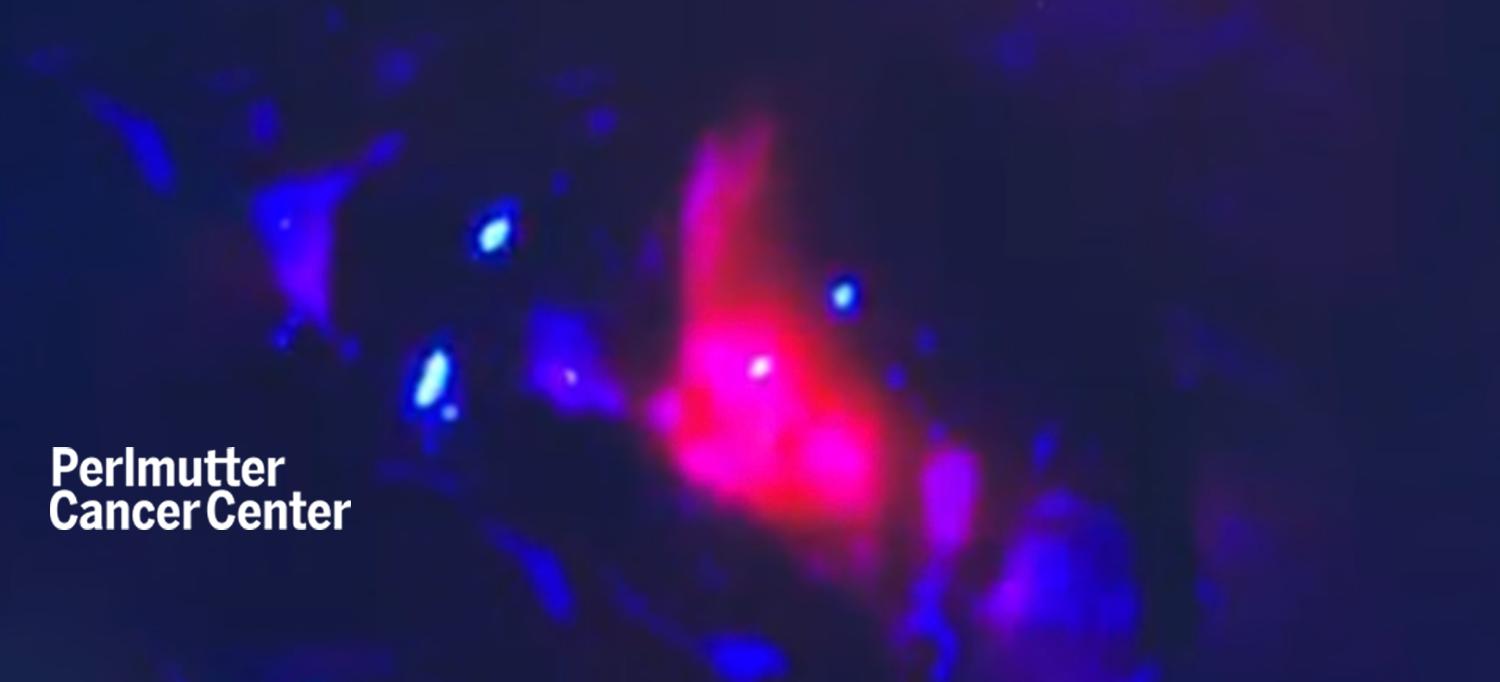
The surgical field is illuminated by blue light; the tumor fluoresces pink because tumor cells have taken up 5-ALA, but normal brain does not fluoresce (looks blue).
Photo: Placantonakis Lab
Treatments such as surgery, radiation therapy, and chemotherapy can extend survival for people with glioblastoma, the most aggressive and malignant form of brain cancer, but most people die within the first 18 months of diagnosis. Dimitris G. Placantonakis, MD, PhD, a neurosurgeon with the Brain and Spine Tumor Center, part of NYU Langone Health’s Perlmutter Cancer Center, is leading a clinical trial of a noninvasive treatment called sonodynamic therapy that could offer new hope for people with recurrent or progressive glioblastoma.
Sonodynamic therapy exploits a phenomenon called sonoluminescence, or ultrasound-induced luminescence, to noninvasively target glioblastoma cells. People enrolled in the phase 1/2 study will be infused with a compound called 5-aminolevulinic acid (5-ALA), a U.S. Food and Drug Administration (FDA)–approved optical imaging agent typically used in glioma surgery to differentiate cancer cells from normal cells. Focused ultrasound waves directed at the tumor cells cause water in the cancer cells to emit light, which causes 5-ALA and its derivative products to fluoresce. Researchers think that the fluorescence generates free radicals, which damage and kill the cancer cells.
Study participants become eligible for the trial at least four weeks after completion of radiation therapy, and they need to have only a single area of glioblastoma in the brain. Participants will receive treatment with focused ultrasound and 5-ALA once a month until the disease progresses.
The phase 1 portion of the study, which is currently enrolling participants, aims to determine if sonodynamic therapy is safe and if it can help patients with recurrent or progressive glioblastoma live longer. The phase 2 portion of the study will enroll a larger number of participants and use the maximum tolerated dose of ultrasound energy and 5-ALA from the phase 1 study to determine the treatment’s efficacy.
Perlmutter Cancer Center, one of five sites around the United States enrolling people for this study, treated its first participant—and the second overall—in July.
“We are very excited about this study because, as a new therapy, it offers hope for people with this disease,” said Dr. Placantonakis, who is also an associate professor in the Department of Neurosurgery at NYU Grossman School of Medicine. “This is also exciting because it offers a noninvasive treatment approach that pulses ultrasound waves from a device that is outside the head, so there is no need to surgically remove the tumor, and it eliminates the risk of side effects that are inherent in conventional brain surgery.”

